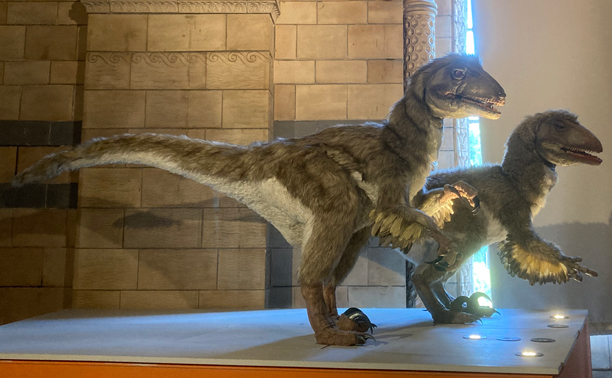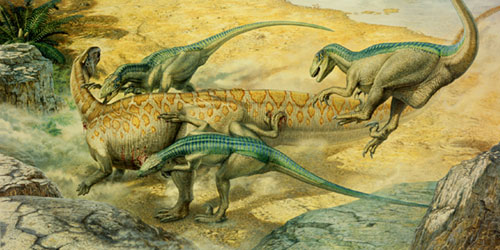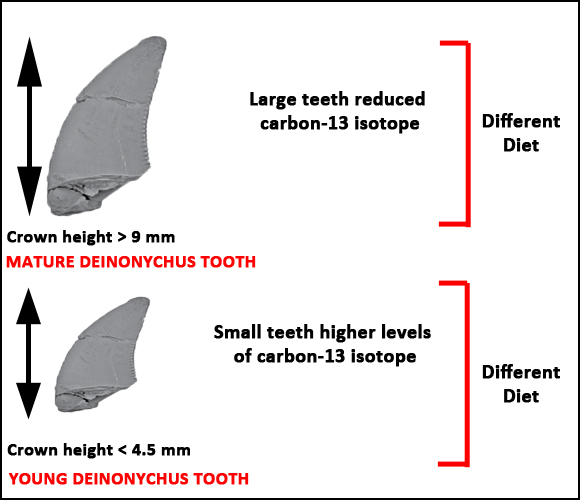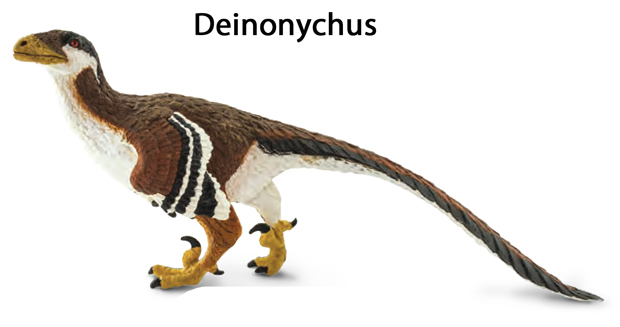“Raptors” Did Not Hunt in Packs According to New Study
New Study Challenges Dromaeosaurids Hunting in Packs
The “Jurassic Park/Jurassic World” movie franchise certainly spawned new generations of dinosaur fans. It could be argued that these extremely successful films, may have influenced the career choices of would-be scientists. All very well and good, but one of the problems associated with the films and with the original book “Jurassic Park” written by Michael Crichton, concerns the “raptors”, those fast running, social pack hunters the size of Deinonychus but in this franchise referred to as Velociraptors.
Popular media has depicted these “raptors” as highly social, intelligent animals capable of working together to attack and bring down prey, but what scientific evidence is there to back-up the on-screen abilities of these dinosaurs?
Studying Isotopes in Dinosaur Teeth
Since it is very rare for the fossil record to preserve behaviour, scientists have had to employ some ingenious lines of research in order to gain an insight into the behaviour of dinosaurs. For example, researchers from the University of Wisconsin, the University of Oklahoma and the Sam Noble Museum (Oklahoma), set about analysing differences in stable carbon isotopes within Deinonychus teeth. Differences in the composition of these stable isotopes in teeth from young dinosaurs when compared to the isotopes found in the teeth of adults, would indicate a different diet.
If the adults had a different diet compared to the younger animals then this would contradict the idea of these dinosaurs being social and hunting in packs.
They conclude that Deinonychus probably did not hunt in a co-operative, co-ordinated manner. These “raptors” were probably not complex, social hunters.
Life-size Deinonychus Replicas on Display

Picture credit: Everything Dinosaur
Laying a Ghost – Highly Intelligent, Pack Hunting “Raptors”
The idea of pack hunting in dromaeosaurids pre-dates “Jurassic Park”, it was first proposed to explain the co-occurrence of Deinonychus (D. antirrhopus) and the iguanodontian Tenontosaurus (T. tilletti). Around a fifth of all Tenontosaurus remains are found in association with D. antirrhopus. It has been proposed that Deinonychus hunted the larger Tenontosaurus and as numerous fossil specimens of Deinonychus have been found with Tenontosaurus remains it was suggested that this was evidence of pack hunting behaviour amongst members of the Dromaeosauridae.
A Pack of “Raptors” (Deinonychus) Attack a Tenontosaurus

Picture credit: John Sibbick
Dromaeosaurs Probably Not Pack Hunters
The depiction of dromaeosaurs as pack hunters is problematic as sophisticated hunting strategies are rarely observed in living archosaurs such as crocodiles and birds. Palaeontologists have considered that perhaps Deinonychus was more analogous to extant reptilian predators such as the Komodo dragon (V. komodoensis), where there seems to be no co-ordinated attack strategy, instead an attack by an individual may instigate mobbing behaviour which would bring down the prey.
Lead author of the study, published in Palaeogeography, Palaeoclimatology, Palaeoecology, Dr Joseph Frederickson (University of Wisconsin), explained:
“The evidence for this behaviour [pack hunting], however, is not altogether convincing. Since we can’t watch these dinosaurs hunt in person, we must use indirect methods to determine their behaviour in life. Though widely accepted, evidence for the pack-hunting dinosaur proposed by Yale University palaeontologist John Ostrom is relatively weak. The problem with this idea is that living dinosaurs (birds) and their relatives (crocodilians) do not usually hunt in groups and rarely ever hunt prey larger than themselves. Further, behaviour like pack hunting does not fossilise so we can’t directly test whether the animals actually worked together to hunt prey.”
Social Pack Hunters versus Mob Hunters
In order to test the likelihood of Deinonychus being a social pack hunter or whether these dinosaurs simply mobbed victims in an uncoordinated manner, the researchers looked at evidence for dietary changes preserved in the stable carbon isotopes found in fossilised Deinonychus teeth of various sizes. The team analysed tooth carbonate from teeth less than 4.5 mm tall (crown height less than 4.5 mm) and compared the carbon isotopes found to those from much larger teeth (crown height greater than 9 mm).
The smallest teeth studied were the relatively most enriched with carbon-13 isotope, whilst the largest teeth used in the study had depleted levels. These results suggest that juvenile Deinonychus consumed different prey than older members of this species.
Analysis of Stable Isotope Carbon-13 in the Teeth of Deinonychus Sheds Doubt on the Social Hunter Hypothesis

Picture credit: Everything Dinosaur
Testing the Teeth of Other Prehistoric Animals as Well as Deinonychus
Teeth from goniopholidid crocodilians as well as the teeth of Tenontosaurus tilletti were also tested. The crocodilian results mirrored those found for Deinonychus. If goniopholidid had the same behaviours of extant crocodilians then, just like their modern counterparts, these reptiles went through a distinct dietary transition as they grew. If the teeth of Deinonychus show very similar results to the crocodilians, then, the implication is that just like crocodiles today, this “raptor” was probably not a complex social hunter it is unlikely that its hunting behaviour was comparable to the pack hunting behaviour of wolves or lions.
Still, the prospect of being mobbed by a gang of agile, three-metre-long, predatory dinosaurs remains unappealing.
A Model of a Deinonychus Dinosaur (D. antirrhopus)

The picture (above) depicts the recently introduced Wild Safari Prehistoric World Deinonychus model.
To view this model range: Wild Safari Prehistoric World Figures and Models.
The scientific paper: “Ontogenetic dietary shifts in Deinonychus antirrhopus (Theropoda; Dromaeosauridae): Insights into the ecology and social behavior of raptorial dinosaurs through stable isotope analysis” by J.A. Frederickson, M. H. Engel, R.L. Cifelli published in Palaeogeography, Palaeoclimatology, Palaeoecology.
The Everything Dinosaur website: Everything Dinosaur.

